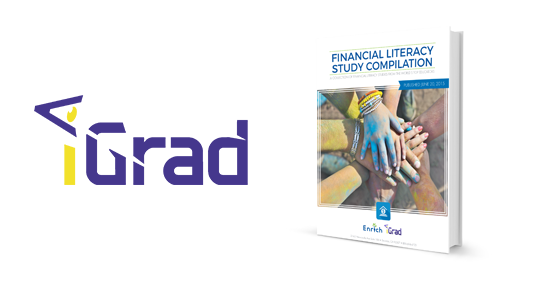These days it doesn’t seem to matter who you are, what your title is, or how much you get paid; we all have more work to do than fits in the hours of the day. Time management and multitasking are key factors to daily success. This is a brief summary of a strategy that one of our partner schools implemented in order to increase the efficiency of the teams that work toward the goal of increasing the financial capability of their student population. That strategy seems pretty simple on the surface. Instead of scrambling each month to come up with a plan for promoting financial topics, why not plan the year out in advance? Here is how it can be done and done well.
In your plan, each month of the year should cover five main areas. Topics, content, communication streams, student touchpoints, and live campus events.
Step 1: Topics
You want your topics to be relevant and timely but also specific. For example, the topic “Taxes” is timely for a spring month but far too generic. Adjusting it to something like “Tax Benefits for Federal Student Loan Borrowers” brings it to a more focused direction. Get creative with the “relevant” concept and think of ways to tie financial concepts to a popular topic for your student audience. Do your sports teams have a strong following? If so, you might try “How to budget for a road game on a part time income.”
Step 2: Content
Organize a list of links to corresponding content on your iGrad platform that can support your topics. Also be sure to list other campus resources that apply. Do you have a great topic but cannot find that perfect piece of supporting content? Talk to your team at iGrad and we can create something custom for you.
Step 3: Identify Potential Communication Streams
Chances are you have a variety of means to communicate with your students. Some of these will be ongoing options such as a weekly or monthly newsletter, while others will be seasonal, such as communications regarding enrollment or graduation. The most important part of this step is to be thorough in identifying the opportunities that already are in place and then determining how you can leverage these options. There is no need to reinvent the wheel.
Step 4: Identify Potential Individual Student Touchpoints
What better way to relay important information than in a one-on-one interaction with your students? Some months may not have this option, but many will. For example, many campuses have one-on-one meetings with all students who are receiving financial aid. This might be in person or over the phone. In either case there is a faculty member in a one-on-one with a student. Take advantage of these opportunities to implement required or recommended assignments for the students that tie into your monthly topics and goals.
Step 5: Identify Potential Live Events
Be open-minded with this one. List all the events each month that will have a large student attendance. Some will be obvious, such as career fairs, graduation fairs, or even better, an event in April for Financial Literacy Month. Then there are events that you wouldn’t normally think to tie in financial literacy to, such as sporting events, concerts, plays, or festivals. Personal finance is so pervasive in our day-to-day lives that you can find a way to tie it into pretty much any event. For example, at an Earth Day fair your focus could be on the financial impact of recycling vs. not recycling—more than one way to “think green.”
Click Here to Check Out a Compilation of 33 Financial Literacy Studies
The goal of this strategy is to have a plan in place that is still fluid and open to adjustment—a living document, if you will. As the year moves forward there are inevitably going to be great ideas that pop up or major events in the news or popular culture that can be leveraged and incorporated into your plan. With that in mind you can create lists of options rather than making a final decision for a month down the road that could change.









